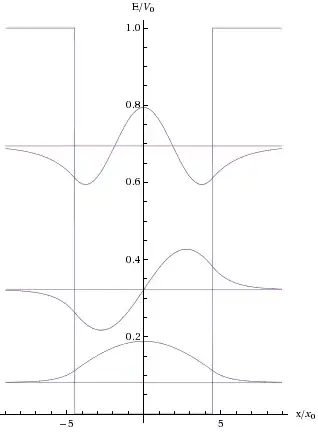Consider a 3D spherically symmetric potential well,
$$H = \frac{p^2}{2m} + V(r)$$
with $V(r) = - V_0$ for $r < a/2$ and $0$ else, for some $V_0 > 0$.
Now, it is well known that $V_0$ needs to be a minimum value for the well to be able to bind a state. A quick estimate with HUP and $T + V < 0$ yields
$$V_0 > \frac{\hbar^2}{2ma^2}.$$
However, the same argument also works for the 1D symmetric well, but in 1D such a well can bind at least one state for any $V_0 > 0$. The same is true for 2D, where any such well can at least bind one state marginally.
I know that a precise calculation yields the desired result, but why does this estimate not work?
